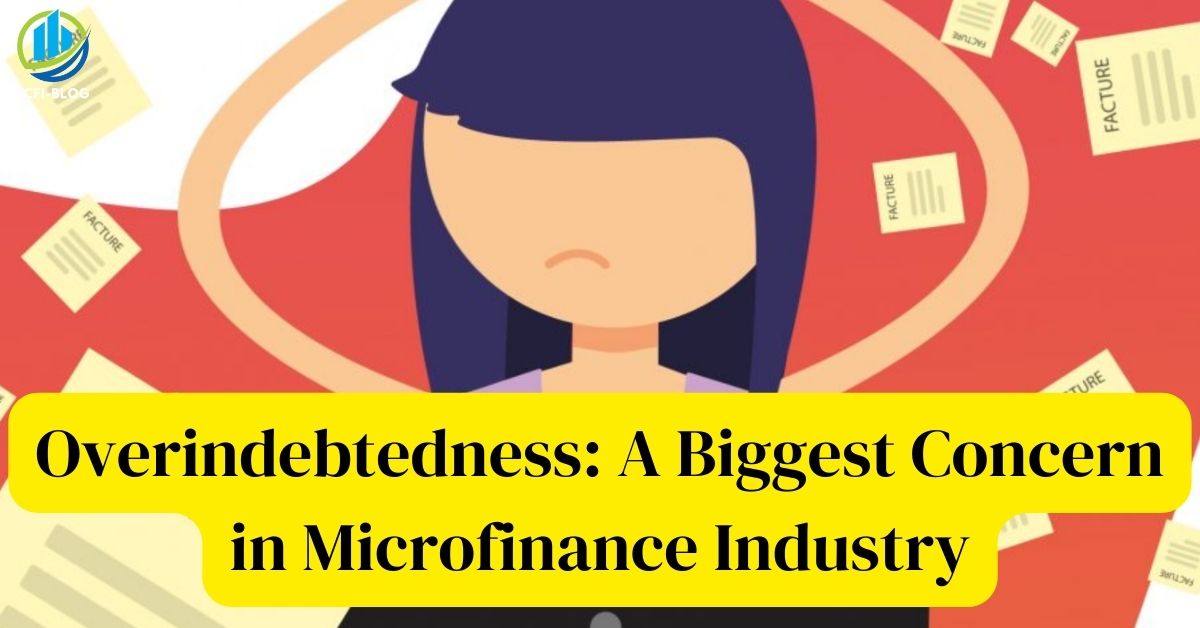As the microfinancing industry is growing, some of its biggest concerns are also coming out. Banana Skins conducts periodic surveys of the microfinance industry and its risks and the 2014 Banana Skins Report reveals overindebtedness as the biggest concern in the microfinance industry. Not just in the 2014 report, but it was also revealed as one of the biggest growing concerns of the microfinance industry in the 2012 Banana Skins report.
Microfinance basically means small monetary assistance from a company. It is especially for those people who cannot get a loan from a traditional bank due to bad credit or any other reasons. In this article, we are going to discuss the 2014 Banana Skins report, focusing on overindebtedness and other risks that the microfinance industry is facing. We will also talk about the current scenario. So now let’s get to know more about this.
What Does the 2014 Banana Skins Report Reveal About Microfinance Industry?

The 2014 Banana Skins Report is an annual survey conducted by the Centre for the Study of Financial Innovation (CSFI) and PwC, which seeks to identify the risks and challenges facing the microfinance industry. The report provides insights into the current state of the microfinance sector, highlighting both the opportunities and challenges facing microfinance institutions (MFIs) and the wider microfinance ecosystem. This report also helps in accelerating financial inclusion with new data.
The report revealed that the microfinance industry continues to face a range of challenges, including issues related to funding, governance, and regulation. Specifically, the report identified the following key risk factors for the microfinance industry:
1. Overindebtedness
The 2014 Banana Skins Report reveals overindebtedness as the biggest concern in the microfinance industry. As per this report, there are so many lending options and it has become so easy for people to take loans irrespective of their credit score and income that people end up taking big loans without thinking about how they would repay the loan. Microfinance can be very helpful for emergency situations, but it can also lead you to overindebtedness if you are not able to repay the loan on time.
2. Funding and Liquidity
The report highlighted that funding remains one of the key challenges for microfinance institutions, particularly in the context of declining donor support and increasing competition for funding from other sources. MFIs are also faced with the challenge of maintaining adequate liquidity in the face of changing market conditions.
3. Governance and Risk Management
The report highlighted that the lack of effective governance and risk management practices remains a key challenge for the microfinance industry, particularly in the context of rapid growth and increasing complexity. As the industry is growing, some malicious companies might also try to get into micro finances. So it becomes very important to take care of risk management as well.
4. Regulation and Supervision
The report noted that the regulatory environment for microfinance is still evolving, with many countries still lacking adequate regulatory frameworks. This lack of regulation and supervision creates a range of risks for MFIs, including credit risk, operational risk, and reputational risk. When this industry has such a huge growth scope, it becomes very important to regulate it to prevent borrowers from getting into any fraud.
5. Client Protection
The report also highlighted the importance of client protection, particularly in the context of rising concerns over over-indebtedness and aggressive lending practices. In order to keep the clients safe from any risks, only verified companies should come into this industry. A similar issue was highlighted by financial diaries revealing about M Pesa use. It becomes the responsibility of the government to keep an eye on all the companies that offer microfinance services and take immediate action if anyone reports any fraud.
Overall, the 2014 Banana Skins Report provides important insights into the challenges facing the microfinance industry, highlighting the need for continued innovation and collaboration in order to address these challenges and ensure the long-term sustainability of the microfinance sector.
Microfinance Industry and Overindebtedness: The Current Scenario
Overindebtedness occurs when borrowers are unable to repay their loans due to a combination of factors such as high-interest rates, multiple loans, inadequate income, and insufficient financial education.
The current scenario of overindebtedness in the microfinance industry is complex and varied across different regions and countries. In some cases, overindebtedness has led to borrowers being trapped in a cycle of debt, which has negatively affected their financial well-being and has led to social problems such as increased poverty, homelessness, and food insecurity.
In recent years, several studies have highlighted the issue of overindebtedness in the microfinance industry. These studies have called for greater regulation and oversight of the microfinance industry to prevent predatory lending practices, improve borrower education, and promote responsible borrowing.
Several initiatives have also been taken to address the issue of overindebtedness in the microfinance industry. For example, some microfinance institutions have implemented credit counseling and financial education programs to help borrowers manage their loans and improve their financial literacy. Additionally, some microfinance institutions have implemented flexible repayment plans and loan restructuring options to help borrowers who are struggling to repay their loans. Not Just this, but now micro financial companies are also working on building trust and growing digital financial services by implementing new frontier in formal services honesty.
Overall, the issue of over-indebtedness remains a significant challenge for the microfinance industry. However, with the right policies and initiatives in place, it is possible to promote responsible lending and borrowing practices and to ensure that microfinance remains an effective tool for poverty alleviation and economic development.
Frequently Asked Questions (FAQs)
Q1. What is Insurance Banana Skin?
Insurance Banana Skin is basically a survey or research done by the Center for the Study of the Financial Industry (CSFI). Banana skin is the periodic study of the microfinance industry and the risks and challenges that it is facing. CFSI releases the Banana Skin report after a particular interval of time.
Q2. What are the challenges facing the microfinance industry?
Currently, the biggest challenge faced by the microfinance industry is overindebtedness. Other than this, the microfinance industry is also facing issues like client protection, regulation, governance, etc.
Q3. What is risk in microfinance?
The main risk in microfinance is overindebtedness. The borrower might get a big loan, and then might not be able to repay the loan. To learn more about finances, you can also read Scarcity why having too little means so much book.
Conclusion
Overindebtedness is still a significant challenge in the microfinance industry. To deal with this, there is a need for collective efforts from the people, government, and companies that offer microfinancing. The people should try to take only those loans that they would be able to fulfill and the companies should only offer loans to people with good creditworthiness, or they can also offer secured loans. Moreover, the government should keep an eye on this whole process of microfinancing.
Author Profile

- Jonas Taylor is a financial expert and experienced writer with a focus on finance news, accounting software, and related topics. He has a talent for explaining complex financial concepts in an accessible way and has published high-quality content in various publications. He is dedicated to delivering valuable information to readers, staying up-to-date with financial news and trends, and sharing his expertise with others.
Latest entries
 BlogOctober 30, 2023Exposing the Money Myth: Financing Real Estate Deals
BlogOctober 30, 2023Exposing the Money Myth: Financing Real Estate Deals BlogOctober 30, 2023Real Estate Success: Motivation
BlogOctober 30, 2023Real Estate Success: Motivation BlogOctober 28, 2023The Santa Claus Rally
BlogOctober 28, 2023The Santa Claus Rally BlogOctober 28, 2023Build Your Team – the Importance of Networking for Traders
BlogOctober 28, 2023Build Your Team – the Importance of Networking for Traders

